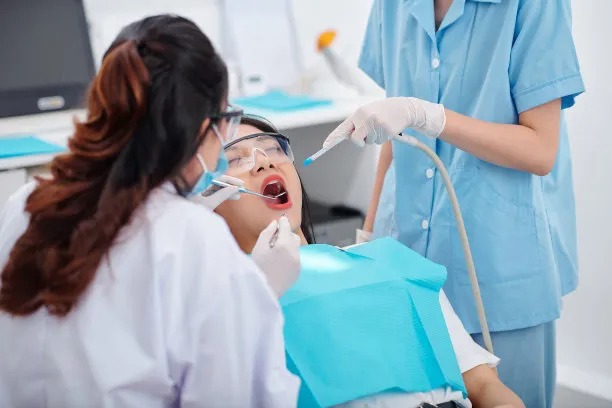The Essential Guide to Extracting a Tooth Safely and Effectively for Optimal Oral Health
Summary: Extracting a tooth can be a complex procedure requiring careful consideration and professional expertise to ensure optimal oral health. This guide aims to outline everything essential for a safe and effective tooth extraction, covering the preparation needed, the extraction procedure itself, post-extraction care, and the potential risks involved. By understanding these key components, patients can empower themselves with the knowledge necessary to handle tooth extractions responsibly and with confidence, ultimately fostering better oral health outcomes.
1. Preparing for a Tooth Extraction Procedure

Preparation is crucial when it comes to dental extractions. The first step involves consulting with your dentist, who will evaluate the situation and decide whether extraction is the best course of action. During this appointment, patients should discuss their medical history, any medications they take, and potential allergies. Such dialogue ensures that the dentist can tailor the extraction process to individual patient needs.
Following the consultation, it may be necessary to take dental X-rays for a clearer view of the tooth and surrounding bone structure. These images help in understanding the position of the tooth and inform the extraction method chosen by the dentist. A full evaluation can prevent complications and outline the best extraction plan.
Lastly, patients must prepare for the day of the extraction. This preparation includes arranging transportation, as anesthesia or sedatives may impair the ability to drive. Additionally, it is advisable to minimize eating or drinking a few hours before the procedure to reduce the risk of nausea during or after the extraction.
2. Understanding the Tooth Extraction Procedure
The extraction procedure typically begins with the administration of anesthesia to ensure the patient experiences little to no discomfort. Dentists may use a local anesthetic to numb the area around the tooth, or in some cases, general anesthesia may be recommended based on the complexity of the extraction.
Once anesthesia takes effect, the dentist will proceed with the extraction. For simple extractions, where the tooth is visible and can be easily removed, instruments like forceps are employed. However, for teeth that are broken beneath the gum line, surgical extraction may be necessary. This involves making an incision in the gum tissue to access the tooth.
Throughout the procedure, the dentist will monitor the patient’s condition closely to ensure safety and effectiveness. Once the tooth is removed, the dentist will provide care instructions and ensure that the patient’s comfort is a priority before they leave the office.
3. Post-Extraction Care for Optimal Recovery
After a tooth extraction, proper care is crucial to promote healing and prevent complications. Patients should follow the dentists aftercare instructions meticulously, which may include resting for the first 24 hours, applying an ice pack to the face to reduce swelling, and managing any pain with prescribed medications.
Maintaining a soft diet is important during the initial recovery period. Patients are often advised to avoid hard, crunchy, or spicy foods that could irritate the extraction site. Instead, focusing on soft foods such as yogurt, mashed potatoes, and smoothies can aid in faster recovery.
Additionally, proper oral hygiene should not be neglected. While careful brushing around the extraction site is necessary, patients should avoid rinsing their mouths vigorously for the first few days to prevent dislodging the blood clot that forms in the socket, crucial for healing.
4. Recognizing Potential Risks and Complications
Though tooth extractions are common, they are not without risks. Potential complications include infection at the extraction site, excessive bleeding, or damage to adjacent teeth. Recognizing these risks beforehand can prepare patients for possible outcomes and highlight the importance of follow-up visits with their dentist.
Dry socket is another concern, occurring when the blood clot fails to form adequately or gets dislodged. This condition can lead to significant pain and may require additional treatment. Early recognition of symptoms, such as severe discomfort several days post-extraction, is vital for prompt intervention.
Lastly, patients should monitor their healing process and not hesitate to reach out to their dentist if they notice any unusual symptoms or complications. Being proactive about oral health can greatly reduce the chances of experiencing negative outcomes after a tooth extraction.
Summary:
In summary, the process of safely extracting a tooth involves careful preparation, a knowledgeable understanding of the extraction procedure, diligent post-extraction care, and awareness of potential risks. By adhering to these guidelines, patients can greatly enhance their oral health and recovery experience.
This article is compiled by Vickong Dental and the content is for reference only.



